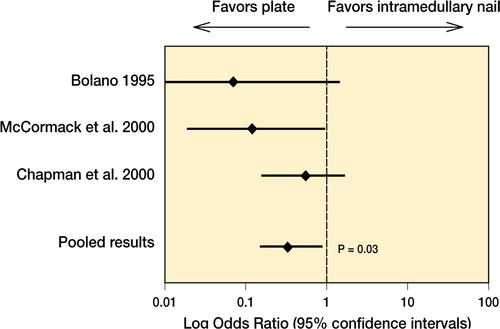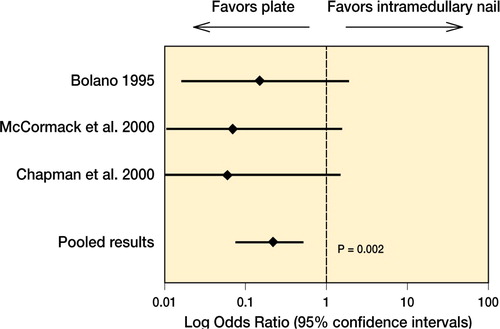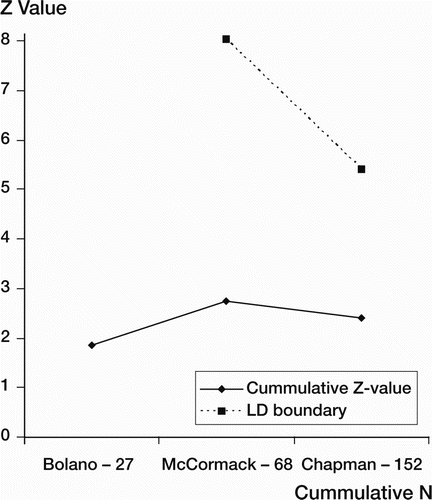Figures & data
Table 1. Study characteristics
Table 2. Results of statistical pooling
Figure 1. Statistical pooling of 3 studies (155 patients) revealed that plate fixation results in a signifiant reduction in reoperation rates (p = 0.03) as compared to intramedullary nail fixation.

Figure 2. Statistical pooling of 3 studies (155 patients) revealed that plate fixation results in a significant reduction in shoulder impingement and pain (p = 0.002) as compared to intramedullary nail fixation.

Table 3. Sensitivity analysis—reoperation rates
Figure 3. Cumulative meta-analysis assessing the effect of compression plating and intramedullary nailing on the need for reoperation in patients with humeral shaft fractures. The Lan-DeMets (LD) sequential monitoring boundary, which assumes a 27% control event rate (i.e. patients receiving intramedullary nailing) and a 25% relative risk reduction with 80% power and a two-sided alpha of 0.05, has not been crossed—indicating that the cumulative evidence is inconclusive.
